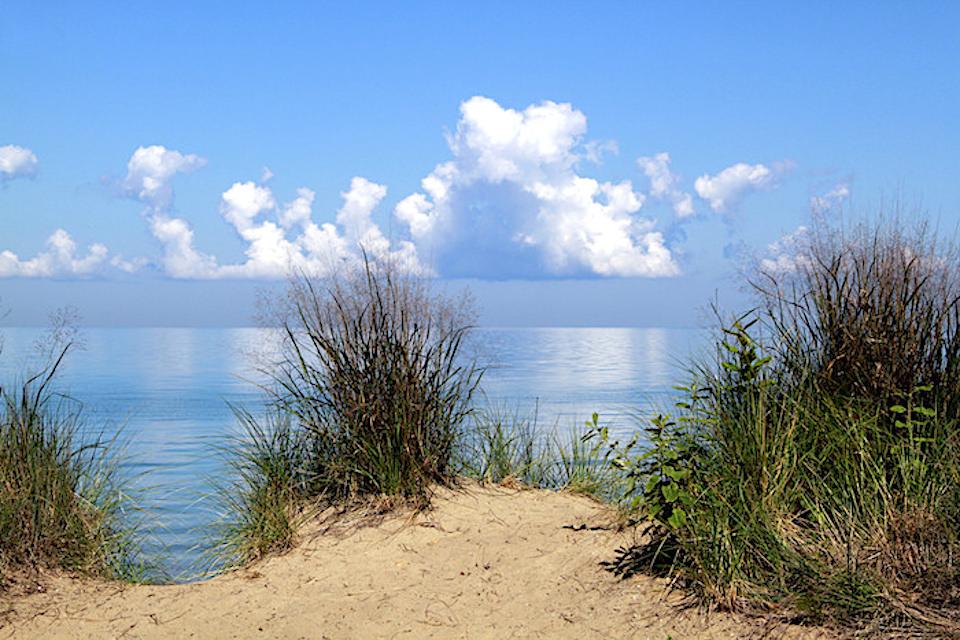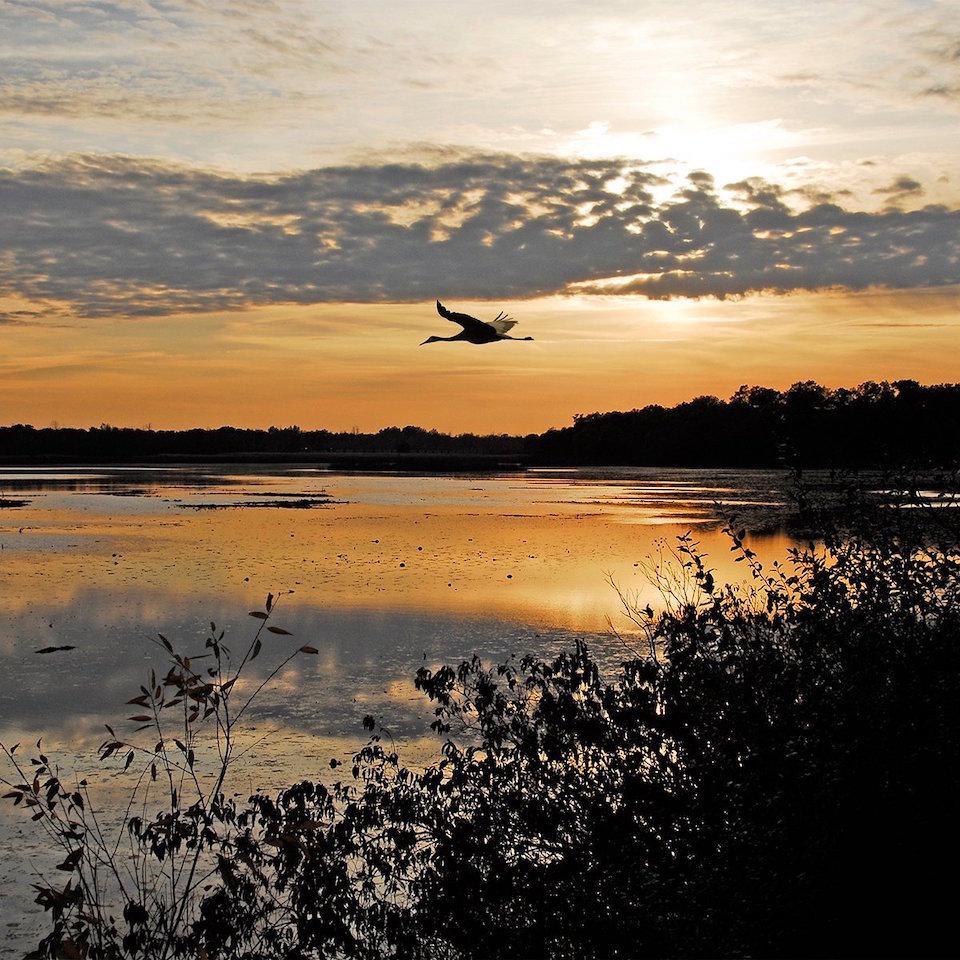
Central Beach is just one option for enjoying Indiana Dunes National Park/NPS
A change in name didn't change, but rather amplified, the reasons Indiana Dunes was added to the National Park System, as a national "lakeshore," back in 1966.
Located on the southern shore of Lake Michigan, this unit of the park system includes some of the most geologically and biologically diverse areas in the United States. The “Indiana Dunes” were formed over a period of 12,000 years by natural forces, including glaciers, wind, and water. Native American tribes, including the Miami and Potawatomi Indian tribes, inhabited the Indiana Dunes region for over 10,000 years.
More recent additions -- an 1822 homestead, 1900s family farm, and houses originally exhibited at the 1933 Chicago World’s Fair -- also can be found at Indiana Dunes, which was renamed a "national park" in early 2019. It wasn't a sudden decision, just one that took a long time to bring to fruition.
Legislation calling for the name change noted that "local conservation efforts to preserve the Indiana Dunes began as early as 1899 when Henry Cowles, a botanist from the University of Chicago who is known for being one of the founders of contemporary ecological study and thought, published an article entitled 'Ecological Relations of the Vegetation on Sand Dunes of Lake Michigan' in the Botanical Gazette, bringing international attention to the intricate ecosystems on the Indiana Dunes. On October 30, 1916, 1 month after the establishment of the National Park Service, Stephen Mather, the first director of the National Park Service, held hearings in Chicago, Illinois, to gauge public sentiment on establishing a large portion of the southern shore of Lake Michigan as one of the first national parks in the United States, to be known as the 'Sand Dunes National Park.'"
However, Mather's plans were interrupted because the United States entered World War I and national focus shifted away from national parks to national defense.
Despite the crowding of the surrounding urban environment, Indiana Dunes is a rich ecological island. Though it covers just 15 miles of Lake Michigan beachfront, and 15,000 acres overall, the biological diversity here is among the highest in the National Park System.
Pinhook Bog, for example, is Indiana's only true bog. Here a layer of sphagnum moss floats atop an ancient lake and serves as the rooting medium for a forest. The Cowles Bog Complex is a mix of wetlands that is a small remnant of an area known as the Great Marsh, where an open body of water flowed into Lake Michigan 4,000 years ago. The bog is being restored with native plants with a goal to boost the lakeshore's biological diversity, provide a resting place for migratory birds, and create a rich outdoor classroom.

Indiana Dunes National Park is a great destination for birders/NPS
What is there to do at Indiana Dunes? Lots.
* You can explore the lakeshore's environment by examining glacial moraines left behind 14,000 years ago by retreating Wisconsin glaciers, fishing the Little Calumet River, or strolling through an oak forest. Tours of Pinhook Bog are possible, too, though you have to go with a ranger.
* Kayakers can paddle along a 15-mile stretch of the Lake Michigan Water Trail that runs between Chicago, Illinois, and Michigan City, Indiana. When completed, the water trail is expected to loop along the entire 1,600-mile coastline of Lake Michigan.
* Portage Lakefront and Riverwalk within the park is operated by the City of Portage under an agreement with the National Park Service. One of the most popular beach areas along the entire national park, it provides easy access to the lakefront, multi-use trails, an accessible fishing pier and a restored 900-foot breakwater. A 3,500-square-foot public pavilion includes restrooms, a seasonal snack bar and a glass walled classroom and meeting space.
* You can explore Eastern Great Marsh, a historic and extensive wetland. it is located in a dune-beach complex less than one mile from Lake Michigan and is situated between two large dune systems. The eastern section of Great Marsh is approximately 500 acres. Historically, Eastern Great Marsh was comprised of a variety of wetland types including a tamarack swamp, sedge meadow, wet-mesic prairie, shallow and deep marsh, and a shallow lake called Fish Lake. Human activities at the site over the last century have resulted in significant alteration to hydrology, plant assemblages, and ecosystem services.
* Early in the year -- usually in February -- you can take in the park's annual Maple Sugar Time festival. In addition to the free, ranger-led tours of the sugaring operation at historic Chellberg Farm, a pancake breakfast usually is held by the Chesterton Lion's Club.
* In mid-May the park is the backdrop for the Indiana Dunes Birding Festival. You have dozens of guided field trips and car pool tours that you can join to view migrating birds within the dunes area, enjoy more than 50 bird-related programs ranging from live bird of prey talks to species ID workshops, and sign up for special workshops for both new bird watchers and educators. Evening events include special excursions for night birds, and a family friendly “birds and brew” social event on multiple nights.
* In winter, forget about swimming in Lake Michigan and instead grab your cross-country skis and head to the Glenwood Dunes Trail. This 6.4-mile trail is a series of interconnecting loops that meander through gently rolling wooded dunes.
* Come fall, attend the annual tour of four historic homes from the 1933 Chicago World’s Fair. This one-day event is held each October. These limited tours are available by reservation only. Each tour lasts two hours and includes an inside look at the Cypress Log Cabin, Florida Tropical, Armco Ferro, and the Wieboldt-Rostone houses.
Of course, you can also simply head to the beach, spread out your blanket, prop yourself up in a beach chair, and enjoy a good book or the mesmerizing waves coming ashore.



Comments
The whole south western shore of Lake Michigan is "God's Country". Truly a jewel for the states of Indiana and Michigan. So many beautiful places to see and experience. Research online to learn the many fascinating facts and than make time to enjoy all four seasons. Each season on the Dunes has its' own beauty. The campgrounds available are beautiful. Come an experience the beautiful gem called "The Dunes".
The naturally occurring associations of botanical species from completely different geographic origins, in the Indiana Dunes, is of global significance. And of great interest to plant scientists from around the world.